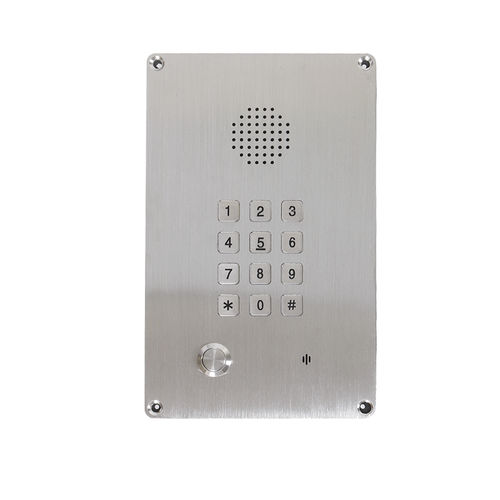
#Industry News
What Technical Problems Should Clean Room Communication Systems Solve?
Clean room communication systems play a crucial role in maintaining a sterile and controlled environment in clean room facilities.
Clean room communication systems play a crucial role in maintaining a sterile and controlled environment in clean room facilities. These systems should address specific technical problems to ensure effective communication while adhering to the strict cleanliness and safety requirements of clean rooms. Here are some technical problems that clean room communication systems should solve:
1.Contamination Control: Clean rooms have stringent cleanliness standards, and any equipment introduced into the environment must minimize the risk of particle generation or contamination. The communication system should be designed with materials and components that are clean room compatible and do not introduce contaminants into the environment.
2.Hands-Free Communication: Clean room personnel often need to work with both hands, making hands-free communication essential. The communication system should offer options for hands-free communication, such as headsets, intercoms, or voice-activated systems, allowing users to communicate without touching devices or compromising the sterile environment.
3.Noise Reduction: Clean rooms can be noisy environments due to equipment and air handling systems. The communication system should incorporate noise reduction features, such as noise-canceling microphones, to ensure clear and intelligible communication even in noisy conditions.
4.ESD Protection: Electrostatic discharge (ESD) can pose a significant risk in clean rooms, potentially damaging sensitive equipment or affecting product quality. The communication system should incorporate ESD protection measures to prevent ESD events and ensure the safe operation of the system within the clean room environment.
5.Sterilization and Disinfection: Clean rooms require regular sterilization and disinfection procedures to maintain cleanliness. The communication system should be designed to withstand the required cleaning protocols, including the use of disinfectants, without compromising its functionality or durability.
6.Wireless Communication: Wired communication systems may not be practical or feasible in clean room environments due to the need for mobility and flexibility. Wireless communication systems, such as wireless headsets or wearable devices, can provide the necessary communication capabilities while allowing users to move freely within the clean room.
7.Integration with Clean Room Garments and Equipment: Clean room personnel wear specialized garments, including clean suits, gloves, and masks, which can restrict access to traditional communication devices. The communication system should integrate with or accommodate these garments and equipment, allowing seamless communication without compromising the integrity of the clean room attire.
8.Interoperability and Integration: Clean room communication systems should be compatible with other clean room equipment and systems, such as environmental monitoring systems or access control systems. Integration with these systems can provide enhanced functionality and facilitate centralized control and monitoring of clean room operations.
9.Emergency Communication: In the event of an emergency or critical situation, clear and reliable communication becomes even more critical. The communication system should have provisions for emergency communication, including emergency call buttons, priority channels, or alarm integration, to ensure prompt and effective communication during emergencies.
10.User-Friendly Interface: Clean room personnel may have limited time or training to operate complex communication systems. The system should have a user-friendly interface that is intuitive and easy to use, requiring minimal training and allowing users to quickly initiate and respond to communication.
By addressing these technical problems, clean room communication systems can provide reliable and efficient communication while maintaining the integrity of the clean room environment. It is important to select communication systems that are specifically designed for clean room applications and meet the stringent requirements of cleanliness, safety, and functionality in these specialized environments.





